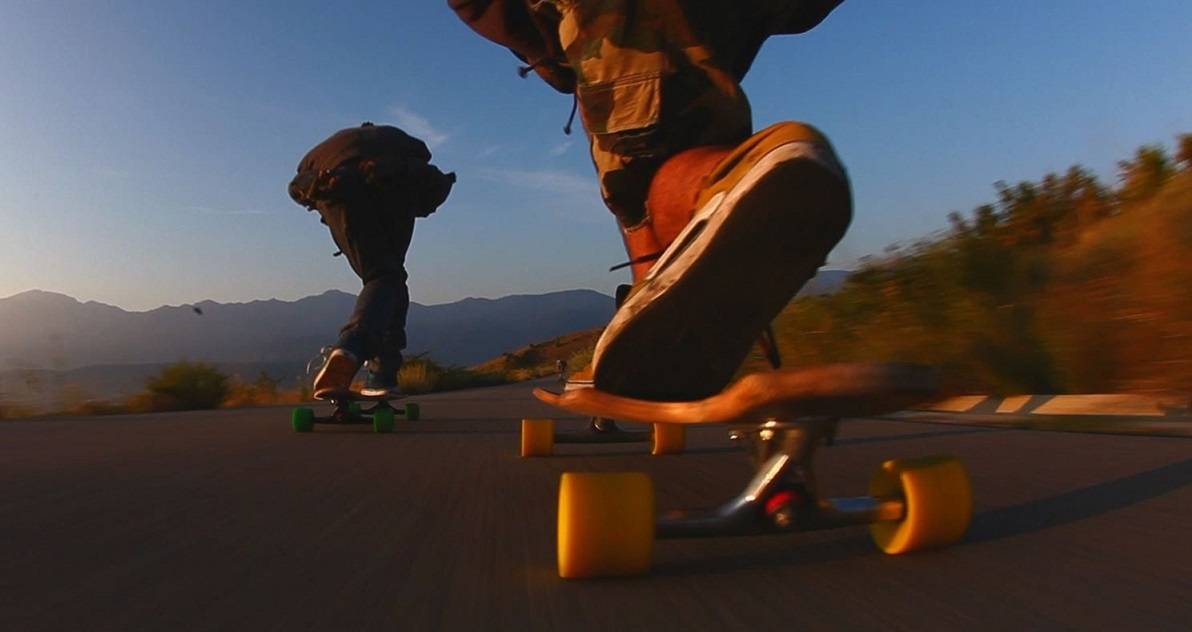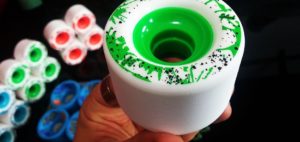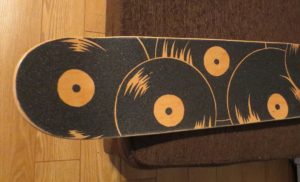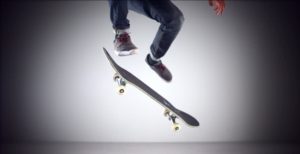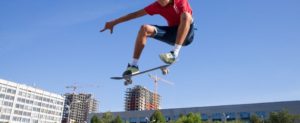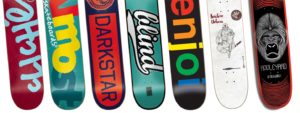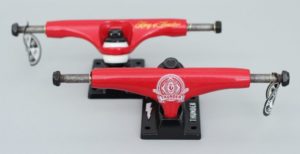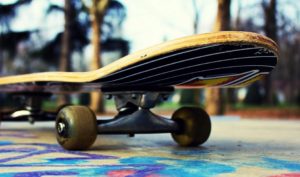Beginning longboard skaters are often baffled by the many brands, lengths, shapes, and wheel sizes to choose from. Here are a few guidelines.
Longboard skateboards range from about 32 inches in length to over five feet. Some are wide and concave or convex; some are pintailed and flat; some are flexy, some are stiff. But choosing the right board for the rider’s height, weight, and purpose doesn’t have to be confusing or complicated.
Some Basics of Longboard Length
First, the trucks (the axle / wheel assemblies) should be at least as far apart a the rider’s feet when they are at shoulder-width. A foot placed just inside each truck when skating will yield the most control, especially for the beginner. This will usually mean a board of about 35 – 39 inches for a kid, and up to about 45 inches for an adult.
Wheelbase affects turning radius; the closer the trucks, the tighter the board will turn. Shorter boards are good for smaller riders, or for larger riders who want to make tight turns or to pump along flat ground. Longer boards won’t turn as tightly, but they are steadier at speed and tend to carve better. A 36 – 45 inch length is about right for a new longboarder.
Some commuter boards, or “minis,” are like shortboards with longboard wheels. They ride sort of squirrelly and erratically, but they can be fun. They negotiate crowds well (like on campuses or downtown) and they can be easily toted and stored away. Minis can also be good for small kids used to shortboards.
Carving/cruising boards are usually in the 42 – 50 inch range. Some are wider with a kick tail; some are flat and convex. Generally, a wider board will turn more easily. Pintails are usually designed for cruising and carving.
Concave and Convex Longboard Decks
Many boards have some side to side concave, meaning that the outside edges of the deck curve upward. The concave allows the rider to exert greater turning pressure on the wheels, giving the board a looser feel. Also, the upward curve lets the deck lean over more without causing “wheel bite,” the (often disastrous) braking effect felt when the wheels contact the underside of the deck in a turn.
Some nose-to-tail concaves make the board higher in the middle and at the front and rear. Sometimes referred to as a “W” shape, this design is similar to the double camber of a ski; it causes the rider’s weight to push the board into the ground, increasing grip.
Some boards have a convex nose-to-tail shape; that is, the highest point is in the middle, virtually spring-loading the board into the ground when weighted. Usually, this shape won’t accommodate a side-to-side concave. Beginners should probably stay away from this design.
Flex in a Longboard Deck
Flex gives a longboard personality. It makes the board come alive. It pushes the wheels into the ground and makes the board jet out of turns. The amount of flex in a board depends upon its material and its shape.
Picking the right flex can be tricky. When standing on a still longboard with feet just inside the trucks, the board should remain almost unflexed, but the rider should be able to induce a little bend into the board by pushing the body weight down onto it.
On medium size boards, skaters tend to keep their feet near the trucks, so a little more flex is OK. On longer boards, where the rider might stand with his/her rear foot more foreward (toward the middle of the board), less flex is probably appropriate.
Supertankers, or boards in the 5-foot range, have the least flex of all, as riders walk up and down the board and are often between the trucks.
Longboard Wheels
If the beginner buys a “complete” board from an established company, it will probably come with medium “durometer” (hardness) and size wheels. Harder wheels can slide laterally, while larger wheels are good for carving and commuting.
The best advice is to stick with the stock wheels for a while. By the time they are worn out, the rider will have a much better idea about his or her style of skating and which wheels are most appropriate.
Guidance From a Good Skate Shop
While the beginner might be tempted to save a few dollars by buying online, it’s best to find a local shop with a friendly and experienced staff. A good salesperson will take the buyer’s height, weight, and experience into account when recommending a board.
Finally, a beginner should start off right by investing in a good helmet and always wearing it when skating. Additional safety gear, like in-line skate gloves with wrist guards, are not a bad idea either, especially for kids. The one universal truth about skating is that falling is part of the learning process, so it is best to be prepared.

